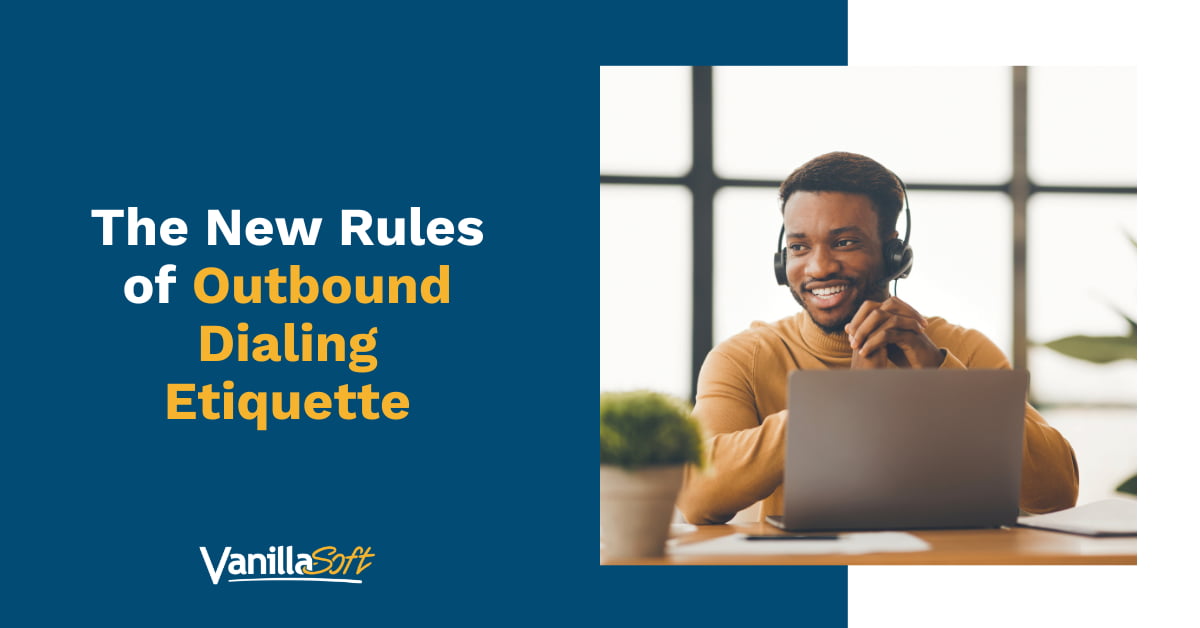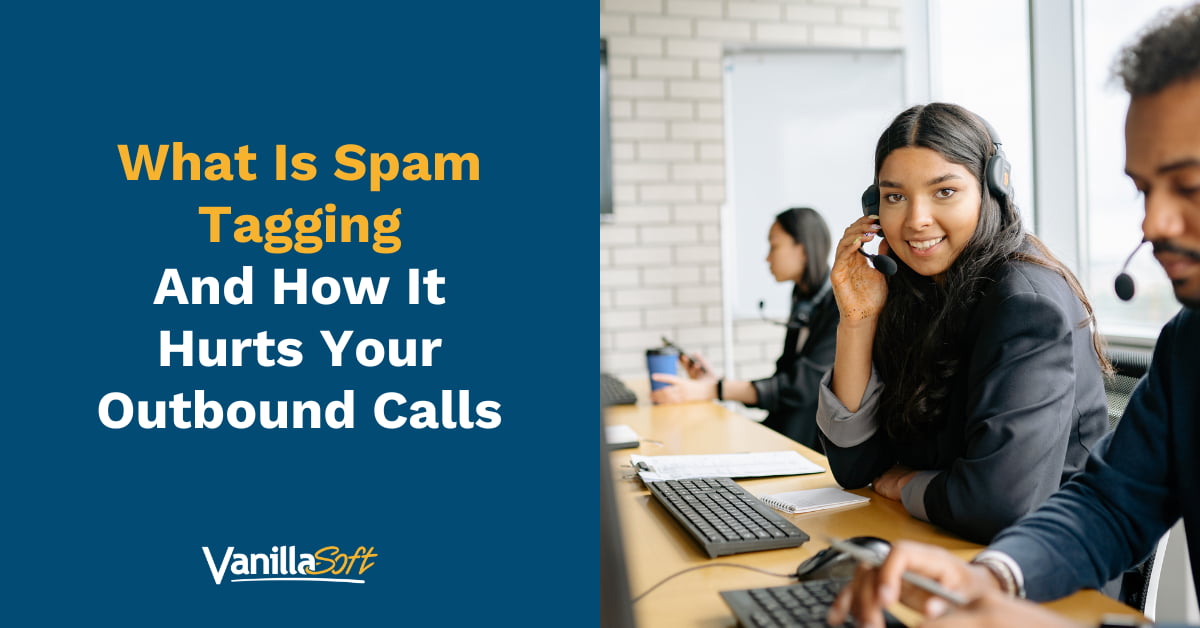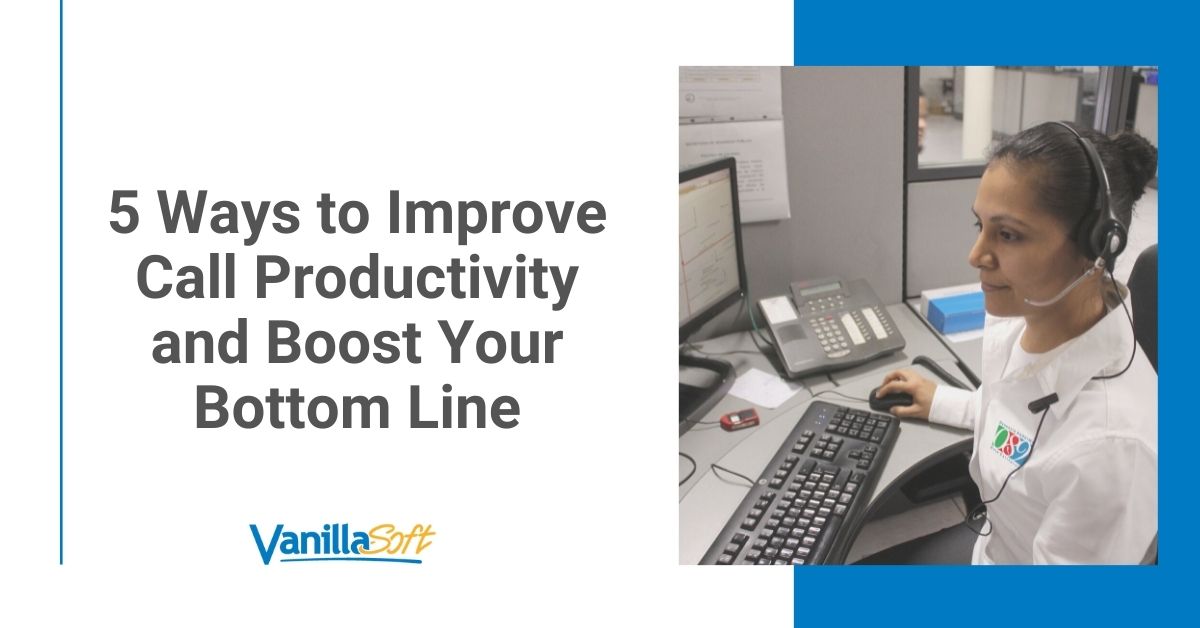
Outbound calling looks nothing like it did ten years ago. The same tactics that once drove results now get your calls blocked, labeled as spam, or ignored entirely. If you’re still dialing in bulk or cycling through phone numbers, you’re not just using outdated methods — you’re risking your outbound performance altogether.
This post is based on insights from VanillaSoft’s recent webinar, The Golden Rules of Outbound Dialing, featuring experts David Krasinski, VP of Trust and Identity Solutions at TransUnion, Daniel Sims, VP of Customer Experience at VanillaSoft, and host James Bishop, VP of Marketing at VanillaSoft. They broke down how today’s calling environment works and what businesses need to do differently to succeed.
Here’s a look at the new etiquette every outbound team needs to follow.
- Key Takeaways
- Why Etiquette Matters More Than Ever
- Rule 1: Don’t Dial Like a Jerk
- Rule 2: Stop Swapping Numbers to “Beat the System”
- Rule 3: Register and Vet Your Numbers
- Rule 4: Use Stir/Shaken to Authenticate Your Identity
- Rule 5: Push Your Brand Identity
- Rule 6: Accept That You Can’t Outsmart the Algorithms
- The Bottom Line: Play the Long Game
Key Takeaways
- Outbound dialing etiquette has changed as spam filters and carrier algorithms become more advanced.
- High-volume calling, rapid call spikes, and rotating numbers often trigger spam tags and lower connect rates.
- Dialing practices that resemble scammer behavior (auto-dialing, bad data, frequent number swapping) increase the risk of being flagged.
- Proper number registration and vetting help protect your outbound caller reputation.
- Stir/Shaken protocols verify caller identity and prevent spoofing, but must be combined with good dialing behavior.
- Branded calling builds trust by showing your business name and logo on recipients’ phones.
- Sustainable outbound dialing requires clean data, consistent calling patterns, and identity-first dialing strategies.
Why Etiquette Matters More Than Ever
The core problem is simple: trust is broken.
Robocalls, spoofing, and scams have trained people to avoid answering unknown numbers. Consumers have become highly selective, ignoring calls unless they know exactly who’s calling and why.
As David Krasinski put it, “There’s a lack of trust on the voice channel.” The result? Even legitimate businesses with permission to call are often getting screened or tagged as spam, and they may not even realize it’s happening.
Outbound dialing today isn’t just about volume or persistence. It’s about earning, and maintaining, trust. And that requires a new level of discipline and etiquette.
Rule 1: Don’t Dial Like a Jerk
“Don’t dial like a jerk” might sound blunt, but it perfectly captures the reality of modern outbound dialing.
The fastest way to get your calls tagged as spam is to adopt dialing behaviors that mimic scammers. That includes:
- Spiking call volume suddenly without any previous history
- Making a large number of calls from the same number in a short time
- Using auto-dialers to hit every possible number, even unassigned ones
- Calling bad or outdated data lists
- Rotating through phone numbers to avoid spam tags (aka “churn and burn”)
As Daniel Sims explained, these are exactly the patterns that carriers’ spam tagging algorithms look for, because they’re the same patterns scammers use.
In short: if you behave like a spammer, you’ll get treated like one.
Rule 2: Stop Swapping Numbers to “Beat the System”
In the past, one of the common workarounds when a number got flagged was to simply retire it and start using a new one. That may have worked years ago, but the carriers’ algorithms have evolved.
New phone numbers with no dialing history are now even more likely to attract scrutiny. A sudden burst of outbound calls from a “clean” number is a clear red flag. Rather than resetting your reputation, you may be making yourself look more suspicious.
As Sims put it, “That might have worked in 2015. It won’t work now.”
Today, you’re far better off building a strong, consistent reputation on your existing numbers than constantly cycling through new ones.
Rule 3: Register and Vet Your Numbers
One of the most effective ways to protect your outbound calls is through proactive number registration and vetting.
By registering your numbers directly with carriers, you establish your identity and demonstrate that your calls are tied to a legitimate business. This reduces the chances of your numbers being mistakenly flagged as spam, even when you’re calling at scale.
It’s important to note that registration isn’t a free pass to ignore dialing best practices. While it helps build trust with carriers, maintaining clean lists and responsible call patterns remains essential.
In today’s environment, number registration has become a basic requirement for businesses that want consistent, reliable outbound connect rates.
Outbound calling can still be one of the most powerful ways to reach prospects and customers — but only if you prioritize trust, identity, call deliverability, and dialing discipline.
Rule 4: Use Stir/Shaken to Authenticate Your Identity
One major breakthrough in call authentication is Stir/Shaken — a protocol that digitally verifies your caller ID, proving that you are who you say you are.
While Stir/Shaken doesn’t fully prevent spam tagging (that’s still based on dialing behavior), it does protect your numbers from being spoofed by bad actors — a problem that previously impacted even the most legitimate businesses.
As Sims cautioned, though: “Stir/Shaken is table stakes. You still need a solution for spam tagging on top of that.”
Rule 5: Push Your Brand Identity
One of the most effective ways to rebuild trust is branded calling — displaying your business name (and even your logo) on the recipient’s screen when the call comes in.
When people know who’s calling, they’re more likely to pick up. This helps not only your answer rates but also the quality of engagement on each call.
Krasinski explained that branding improves not just connect rates, but downstream metrics: “The people that are answering are much more engaged.”
Branded calling solutions are now available across most major carriers, and they’re rapidly becoming an essential part of modern outbound etiquette.
Rule 6: Accept That You Can’t Outsmart the Algorithms
Many businesses still approach spam tagging like it’s a game of cat and mouse: test the limits, see what gets through, and try to outsmart the system.
But the reality is: the algorithms are smarter, faster, and constantly evolving. What works today may trigger blocks tomorrow. Every carrier has its own proprietary algorithm, and they share very little about how they work.
Instead of trying to beat the system, your outbound strategy should focus on long-term sustainability:
- Consistent dialing patterns
- Clean, high-quality data
- Number registration and vetting
- Verified caller identity
- Responsible volume management
The businesses that play by these rules are the ones seeing consistent results.
The Bottom Line: Play the Long Game
Outbound dialing isn’t dead, but it’s no longer a volume game. The organizations that succeed are the ones that prioritize trust, identity, and dialing discipline.
As James Bishop summed it up during the webinar: “Make sure you’ve got an authenticated number. Make sure you’ve got a trusted number. Make sure it’s tokenized with the telcos through Stir/Shaken and make sure you’ve got a managed service.”
Outbound calling can still be one of the most powerful ways to reach prospects and customers — if you respect the new etiquette.



